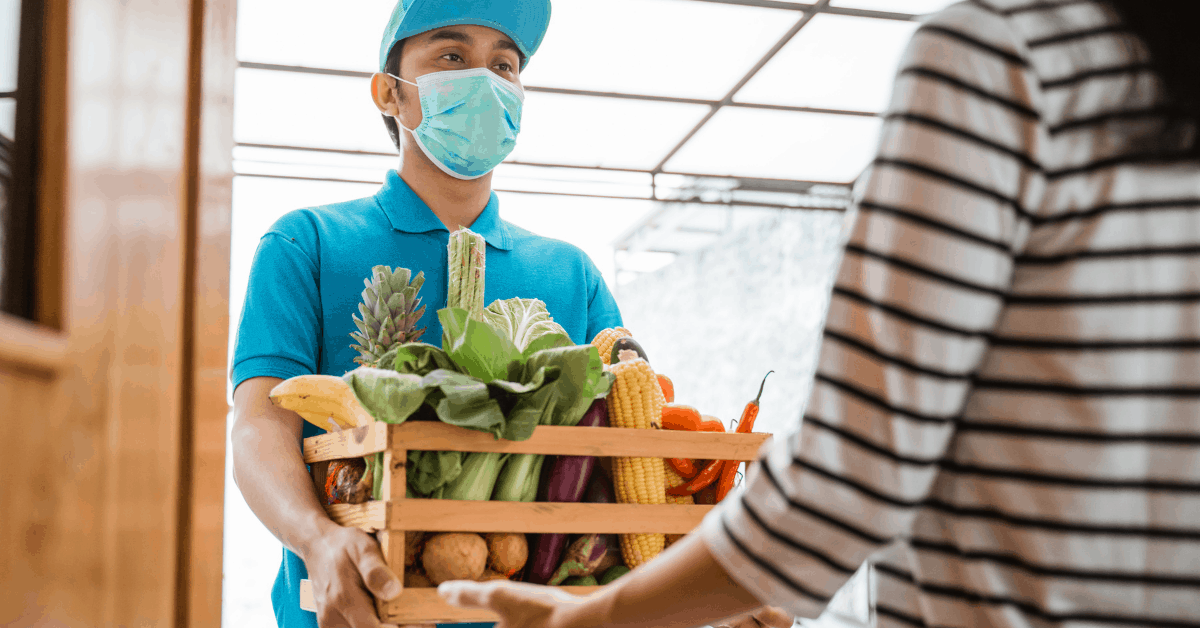
Joshua Dreller
Sr. Director, Content Marketing @ Skai

Joshua Dreller
Sr. Director, Content Marketing @ Skai

The COVID-19 crisis not only changed the ways in which the world thinks about safety, but also, perhaps forever, the ways in which many of us shop.
Not only has the pandemic driven more online orders than ever before, but it has also formed new relationships between vendors and customers, forcing many in the CPG industry to reconsider the ways in which they interact with buyers.
Traditionally, the bulk of CPG budgets have been spent on marketing-focused branding KPIs for driving brand awareness, equity, and engagement. But as consumers increasingly shift to ecommerce, CPG ecommerce trends around connecting with those consumers are likely here to stay.
Here’s everything you need to know about the ways in which the marketplace has shifted for CPG brands:
Of course it’s no surprise that ecommerce boomed in 2020, as shutdowns and stay-at-home orders meant that most consumers were tethered to their laptops or phones, relying on apps, websites, and marketplaces like Walmart.com and Amazon.com to purchase items they once might have simply grabbed from the corner store. But even if it’s not exactly shocking that ecommerce numbers rose in 2020, the figures are still staggering: In 2020, U.S. consumers spent $861.12 billion dollars online, up 44% from the previous year, according to a recent report by Digital Commerce 360.
And while it might seem logical that those numbers might fall as stores reopen and consumers are free to resume their normal habits, some studies show that shopping behaviors acquired during the pandemic might have some staying power. According to a survey by PWC, 50% of respondents plan to keep trying new brands and products, while nearly half say they hope to maintain the healthier habits they’ve adopted during the COVID-19 crisis, which could possibly mean spending less time running errands and browsing physical stores and more time spent focusing on taking daily walks, practicing yoga, or gardening, activities many took up when there seemed to be nothing but downtime.
Pivoting to the drastic surge of online shopping during a pandemic when worker shortages were at an all-time high did have one huge drawback: massive headaches around delivery logistics.
In April 2020, at the height of the pandemic, shoppers reported extreme difficulty trying to order things like groceries for delivery or pickup through apps and websites that simply weren’t prepared to meet the extreme surge in demand. Companies that were ready, like Amazon and Walmart, were able to fill those gaps, and profits soared. Delivery services have blossomed, too, such as Instacart and GoPuff.
The lesson that the CPG industry should take is that preparation literally pays–updating those systems and making sure deliveries are running smoothly, even if the surge has slowed, is well worth it for consumers who have both learned about the ease and convenience of ecommerce and discovered that they hate waiting.
In 2021, as America is seeing a bit of light at the end of the tunnel following a bleak year of devastating pandemic news, another crisis is on many consumers’ minds: the environment. According to a recent study by IBM and the National Retail Federation, 70% of consumers say that they prefer sustainable brands, and 80% of North American shoppers want to know the origins of the products they’re buying.
For the CPG industry, transparency is more important than ever before, and making sure that customers know a company’s values can go a long way in standing out from the competition.
At the start of the pandemic, almost all retailers had to consider the new demands of consumers, taking stock of inventory, supply chain, and logistics. As Amazon and Walmart proved, those who were able to meet those changing demands first saw the benefits of the rapidly changing ecommerce market. But so too did direct-to-consumer businesses, which also quickly adapted and grew their sales during the pandemic.
CEO of Whitebox, Marcus Startzel, recently told Forbes, “The fast-growing D2C ecosystem has created a democratized battleground in the fight for consumer loyalty, and brands that embrace this growth with a strategic approach to modern commerce will emerge as the differentiators.”
D2C brands are winning the battle for consumer attention in a crowded landscape by not only gathering data about their audiences, but by using that data in order to fit those consumers’ changing needs. CPG brands that fail to understand a post-COVID marketplace will likely be left behind.
We use cookies on our website. Some of them are essential, while others help us to improve this website and your experience.
Here you will find an overview of all cookies used. You can give your consent to whole categories or display further information and select certain cookies.